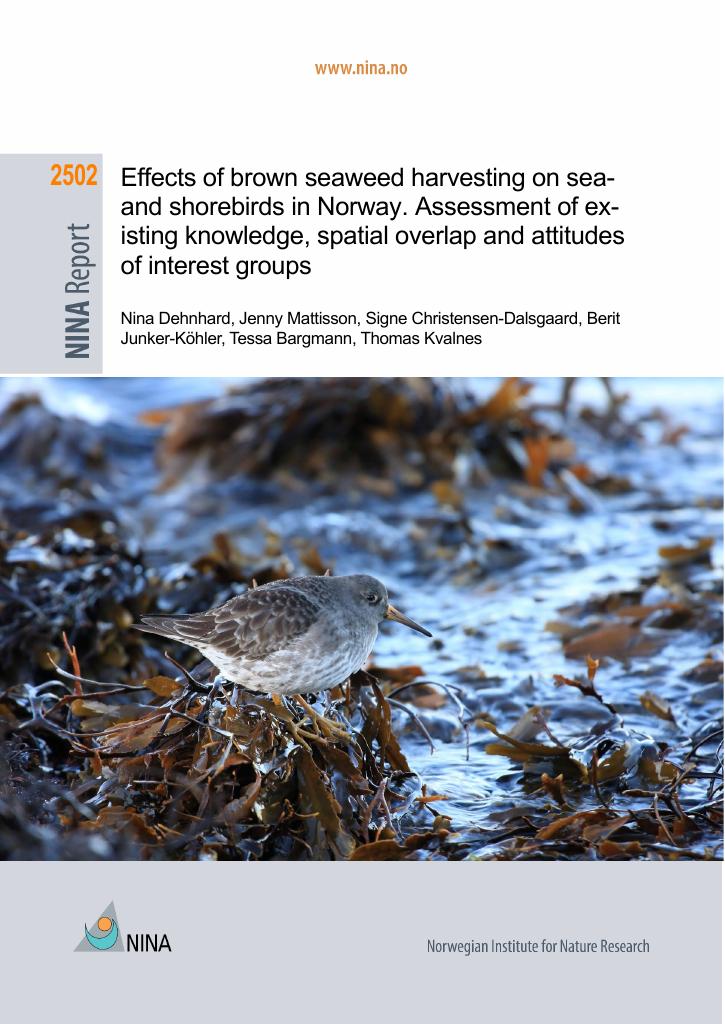Studie
Effects of brown seaweed harvesting on sea- and shorebirds in Norway. Assessment of existing knowledge, spatial overlap and attitudes of interest groups
There is a high commercial interest in harvest of wild brown seaweed internationally and in Norway. In Norway, harvest of wild seaweed almost exclusively targets two species: the kelp species tangle (Laminaria hyperborea) that grows in the subtidal zone, and knotted wrack (Ascophyllum nodosum), which grows in the intertidal zone. Despite the increasingly mechanized harvest being practiced since the 1970s, relatively little is known about the effects of harvesting on the ecosystem and especially on seabirds and shorebirds that use these habitats. The aims of this report were to 1) collate information about how much seaweed is harvested annually, monthly and by region, 2) review the existing literature on effects of seaweed harvest on birds, to summarise existing knowledge and identify knowledge gaps, 3) investigate the spatial overlap between areas harvested for kelp and three species of seabirds - a multiyear case study in the region north of Vikna, central Norway, and 4) assess the attitudes of different interest groups towards harvesting of seaweed. Between 2016 and 2023, on average 149 506 tonnes of kelp and 17 954 tonnes of knotted wrack were harvested in Norway annually. The peak of harvesting for both types of seaweed occurred in the period April-October, which coincides with the migration period and the breeding season of birds
Publisert
Eier
Statsforvalteren i Trøndelag
Utfører
Norsk institutt for naturforskning
